[{1 1}]
2024-04-18
11791
Resistors, commonly abbreviated as "R," are components primarily used to restrict the flow of current in a circuit branch, featuring fixed resistance values and typically two terminals. This article will delve into resistor types, symbols, and representation methods to provide a deeper understanding of this component. Let’s get started!
Catalog
1. Production
In everyday life, resistors are often simply called resistance. These components are primarily used to limit the current flow in a circuit branch, and they come with a fixed resistance value and usually two terminals. Fixed resistors have a constant resistance value, whereas potentiometers or variable resistors can be adjusted. Ideally, resistors are linear, meaning the instantaneous current through a resistor is directly proportional to the instantaneous voltage across it. Variable resistors are commonly used for voltage division, which involves adjusting the resistance by moving one or two movable metal contacts along an exposed resistive element.
Resistors convert electrical energy into heat energy, showcasing their power-dissipating characteristics, while also playing roles in voltage division and current distribution in circuits. Whether for AC or DC signals, resistors can transmit these effectively. The symbol for a resistor is "R," and its unit is the ohm (Ω), with common elements like light bulbs or heating wires also considered resistors with specific resistance values. Additionally, the size of the resistance is influenced by the material, length, temperature, and cross-sectional area. The temperature coefficient describes how the resistance value changes with temperature, defined as the percentage change per degree Celsius.
2. Overview of Resistor Types and Symbols
2.1 Types of Resistors
Resistors vary based on their material, construction, and function, and can be divided into several main types. Fixed resistors have a set resistance value that cannot be changed, including carbon film resistors, metal film resistors, and wire-wound resistors.
Carbon film resistors are made by depositing a carbon layer on a ceramic rod through high-temperature vacuum evaporation, adjusting the resistance value by changing the thickness of the carbon layer, or by cutting grooves. These resistors offer stable resistance values, excellent high-frequency characteristics, and low-temperature coefficients. They are cost-effective in mid to low-end consumer electronics with typical power ratings from 1/8W to 2W, suitable for environments below 70°C.
Metal film resistors, made from nickel-chromium alloys, are known for their low-temperature coefficients, high stability, and precision, making them suitable for long-term usage below 125°C. They produce low noise and are often used in applications requiring high precision and stability, such as in communications equipment and medical instruments.
Wirewound resistors are created by winding metal wire around a core and are valued for their high precision and stability, suitable for high-precision applications.
Variable resistors, whose resistance values can be adjusted manually or automatically, include rotary, slider, and digital potentiometers, applicable for controlling volume and adjusting circuit parameters.
Specialty resistors, such as thermally sensitive or voltage-sensitive types, offer specific functionalities for sensing environmental changes or protecting circuits.
These diverse resistors form a versatile family, meeting various technical needs and application scenarios.
2.2 Resistance Units and Symbols
Resistance (Resistance) is denoted by the letter R, with the unit ohm (Ohm, Ω), defined as the ratio of voltage to current, i.e., 1Ω equals 1 volt per ampere (1V/A). The magnitude of resistance indicates the degree to which a conductor impedes electric current, with Ohm's law formula I=U/R, showing that current is a function of voltage and resistance.
Resistance units include kiloohms (kΩ) and megaohms (MΩ), with 1MΩ equaling 1 million Ω, and larger units such as gigaohms (GΩ) and teraohms (TΩ) being thousand megaohms and thousand gigaohms, respectively.
2.3 Representing Resistors
In circuit diagrams, resistance values are represented by the symbol “R” followed by a number indicating specific resistance values and precision. For example, R10 indicates a 10Ω resistor. Tolerances are usually expressed as percentages, such as ±1%, ±5%, etc., reflecting the possible maximum deviation in resistance value.
Resistor models may also include identifiers for materials and technological features, aiding in the accurate selection of appropriate resistors. The table below lists some symbols and meanings associated with resistor models and materials, helping clarify our understanding of resistors.
2.4 Technical Characteristics of Common Resistors
The primary characteristics of commonly used resistors include high stability, precision, and power handling capacity. Stability refers to the ability to maintain resistance value under specific conditions, which is closely related to the resistor material and packaging technology. Precision reflects the deviation of the resistance value from its nominal value, with common precision grades being 1%, 5%, and 10%, etc. High-precision resistors are widely used in precise circuits.
The power handling capacity indicates the maximum power a resistor can manage, with standards such as 1/4W, 1/2W, etc., which relate to the resistor's performance in high-power environments.
Additionally, the frequency characteristic of a resistor describes how its resistance value changes with the signal frequency, which is particularly crucial in high-frequency circuit design. Good frequency characteristics mean that the resistor can maintain stable performance across a wide range of frequencies.
As we can see, common resistors are characterized by high stability, high precision, strong power handling capabilities, and good frequency characteristics. These features make common resistors widely used in various electronic circuits, capable of meeting the diverse requirements of those circuits.
3. Ree Main Types of Resistors and Their Symbols
3.1 Fixed Resistors
Fixed resistors are typically represented in circuit diagrams by a simple rectangular symbol, as shown below:
The lines extending from both ends of the symbol represent the resistor's connecting pins. This standardized graphic simplifies the depiction of the resistor's internal complexity, facilitating the reading and understanding of circuit diagrams.
3.2 Variable Resistors
Variable resistors in circuit design are indicated by adding an arrow to the standard resistor symbol to denote that their resistance can be adjusted, as shown in the following updated standard symbol for a variable resistor:
This symbol clearly distinguishes between the two fixed pins and one movable pin (wiper), typically denoted by "RP" for variable resistors. An example of a more traditional variable resistor symbol, which visually depicts the principle of resistance adjustment and its actual connection in the circuit, is shown where the wiper pin connects to one of the fixed pins, effectively short-circuiting part of the resistive element to adjust the resistance value.
Another symbol shown below is used for a potentiometer, where the variable resistor has three completely independent pins, indicating different connection modes and functions:
3.3 Preset Resistors
Preset resistors are a special type of variable resistor designed for initially setting specific resistance values in circuits. These resistors are adjusted with a screwdriver, are cost-effective, and thus widely used in electronic projects to reduce costs and enhance economic efficiency.
Preset resistors not only adjust the operational state of circuits but also effectively protect sensitive components within the circuits, such as capacitors and DC contacts. They do this by limiting the high charging currents that might occur at power-up, avoiding excessive current that could cause capacitor damage and contactor failure. The symbol for a preset resistor is shown below:
4. Symbols for Potentiometers
In the construction of potentiometers, the resistive element is usually exposed, and equipped with one or two movable metal contacts. The position of these contacts on the resistive element determines the resistance from one end of the element to the contacts, thus affecting the output voltage. Depending on the material used, potentiometers can be divided into wire wound, carbon film, and solid types. Moreover, potentiometers can be classified into linear and logarithmic types based on the relationship between the output and input voltage ratios and the angle of rotation; linear types change the output voltage linearly with the angle of rotation, while logarithmic types change the output voltage in a nonlinear fashion.
Key parameters include resistance value, tolerance, and rated power. The characteristic symbol for a potentiometer is "RP", where "R" stands for resistance and the suffix "P" indicates its adjustability. They are not only used as voltage dividers but also for adjusting the power level of laser heads. By adjusting the sliding or rotating mechanism, the voltage between the moving and fixed contacts can be altered based on position, making potentiometers ideal for adjusting voltage distribution in circuits.
5. Social Resistor Symbols
5.1 Thermistors
Thermistors come in two types: Positive Temperature Coefficient (PTC) and Negative Temperature Coefficient (NTC). PTC devices have a low resistance at normal temperatures (a few ohms to several tens of ohms) but can rise dramatically to hundreds or even thousands of ohms within seconds when the current exceeds the rated value, commonly used in motor start-ups, demagnetization, and fuse circuits. Conversely, NTC devices exhibit high resistance at normal temperatures (several tens to thousands of ohms) and rapidly decrease as the temperature rises or current increases, making them suitable for temperature compensation and control circuits, such as in transistor biases and electronic temperature control systems (like air conditioners and refrigerators).
5.2 Photoresistors
The resistance of photoresistors is inversely proportional to the light intensity. Typically, their resistance can be as high as several tens of kiloohms in the dark, and drop to a few hundred to several tens of ohms under light conditions. They are mainly used in light-controlled switches, counting circuits, and various automatic light-control systems.
5.3 Varistors
Varistors utilize their nonlinear voltage-current characteristics for over-voltage protection in circuits, clamping voltages, and absorbing excess current to protect sensitive components. These resistors are often made from semiconductor materials like zinc oxide (ZnO), with resistance values that vary with the applied voltage, widely used to absorb voltage spikes.
5.4 Humidity-Sensitive Resistors
Humidity-sensitive resistors work based on the moisture absorption characteristics of hygroscopic materials (like lithium chloride or organic polymer films), with resistance values decreasing with increasing environmental humidity. These resistors are used in industrial applications to monitor and control environmental humidity.
5.5 Gas-Sensitive Resistors
Gas-sensitive resistors convert detected gas components and concentrations into electrical signals, primarily composed of metal oxide semiconductors that undergo redox reactions when adsorbing certain gases. These devices are used for environmental monitoring and safety alarm systems to detect concentrations of harmful gases and pollutants.
5.6 Magneto-Resistors
Magneto resistors change their resistance in response to variations in the external magnetic field, a characteristic known as the magnetoresistance effect. These components provide high-precision feedback for measuring magnetic field strength and direction, widely used in positioning and angle measurement equipment.
6. Methods of Indicating Resistor Values
The methods of marking resistor values are mainly divided into four types: direct marking, symbol marking, digital coding, and color coding, each with its characteristics and suited for different identification needs.
Direct Marking Method:
This method involves directly printing numbers and unit symbols (like Ω) on the resistor's surface, for example, "220Ω" indicates a resistance of 220 ohms. If no tolerance is specified on the resistor, a default tolerance of ±20% is assumed. Tolerances are usually directly represented as percentages, allowing for quick identification.
Symbol Marking Method:
This method uses a combination of Arabic numerals and specific text symbols to indicate resistance values and errors. For example, the notation "105K" where "105" signifies the resistance value, and "K" represents a tolerance of ±10%. In this method, the integer part of the number indicates the resistance value, and the decimal part is split into two digits representing the tolerance, with text symbols like D, F, G, J, K, and M corresponding to different tolerance rates, such as ±0.5%, ±1%, etc.
Digital Coding Method:
Resistors are marked using a three-digit code, where the first two digits represent significant figures, and the third digit represents the exponent (number of zeros following), with the unit assumed to be ohms. For example, the code "473" means 47×10^3Ω or 47kΩ. Tolerance is typically indicated with text symbols like J (±5%), and K (±10%).
Color Coding Method:
Resistors use different colors of bands or dots to represent resistance values and tolerances. Common color codes include Black (0), Brown (1), Red (2), Orange (3), Yellow (4), Green (5), Blue (6), Purple (7), Gray (8), White (9), and Gold (±5%), Silver (±10%), None (±20%), etc. In a four-band resistor, the first two bands represent significant figures, the third band the power of ten, and the last band the tolerance; in a five-band resistor, the first three bands show significant figures, the fourth band the power of ten, and the fifth band shows the tolerance, with a significant gap between the fifth and the rest of the bands.
7. Conclusion
From fixed resistors to variable resistors, and to special resistors, each type of resistor has its unique physical properties and areas of application. Overall, the diversity of resistors and the technical principles behind them not only showcase the depth and breadth of electronic component technology but also reflect the ongoing advancement and innovation in electronics. Understanding the types, characteristics, and applications of resistors is fundamental and essential for circuit designers and electronics technicians.
If you have any questions or need more information, please contact us.
Frequently Asked Questions [FAQ]
1. What are the symbols of resistors?
In general, resistors are usually represented by symbols such as R, RN, RF, and FS. In the circuit, the symbol of the fixed resistor and trimming resistor is R, and the symbol of the potentiometer is RP.
2. What is the K symbol on a resistor?
The symbol for a 1 kilohm (1KΩ) resistor is typically represented as "1K" or "1kΩ". The letter "K" denotes the SI unit prefix "kilo," which represents a multiplier of 1,000. Therefore, "1KΩ" signifies a resistor with a resistance value of 1,000 ohms.
3. What is a resistor used for?
A resistor is a passive two-terminal electrical component that implements electrical resistance as a circuit element. In electronic circuits, resistors are used to reduce current flow, adjust signal levels, divide voltages, bias active elements, and terminate transmission lines, among other uses.
 FAATATAU IA TATOU
Tagata faamalieina i taimi uma.Agaalofa ma le talitonuina ma fiafia masani.
FAATATAU IA TATOU
Tagata faamalieina i taimi uma.Agaalofa ma le talitonuina ma fiafia masani.
suʻega suʻega.O oloa aupito pito sili ona maualuga tau ma le tautua sili o lo tatou tautinoga faavavau.
![[{1 1}]](/upfile/blog/small_2024041815241725511.png) [{1 1}]
[{1 1}]
2024-04-18
![[{1 1}]](/upfile/blog/small_2024041717150756331.png) [{1 1}]
[{1 1}]
2024-04-17
VAI VAEGA Numera
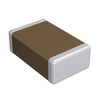 GCM2165C1H101JA16D
GCM2165C1H101JA16D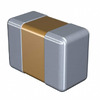 C1005X6S1C474K050BC
C1005X6S1C474K050BC CGA3E2X7R2A472K080AE
CGA3E2X7R2A472K080AE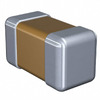 C0603C0G1E4R9C030BG
C0603C0G1E4R9C030BG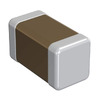 GJM0225C1E9R9CB01L
GJM0225C1E9R9CB01L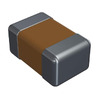 08055A330J4T2A
08055A330J4T2A 08051C472J4T2A
08051C472J4T2A 04023U1R5BAT2A
04023U1R5BAT2A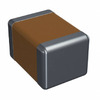 18121C204JAT2A
18121C204JAT2A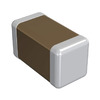 GRM1555C1H6R4WZ01D
GRM1555C1H6R4WZ01D
- CS8406-DSZ
- X9429WV14T4
- EP20K160EFC484-1X
- MCF5206EFT54
- 74ALVCH32245BFG8
- M29W640GT7AN6E
- PTH12060WAH
- USB3370B-EZK-TR
- VE-J04-EX
- MAX5092AATE+
- V375A24C600A2
- NTMFS4108NT1G
- T491C475K035ZTAU00
- CSD25402Q3A
- XC9572-15PQG100I
- C2012X5R1A226K
- CY7C4291V-25JC
- DS92LV3242TVS
- ICS9169CF-40
- LC5512MV-45Q208-75I
- LH1780BAR
- LT3437EDD
- MB90F244PFT-G
- PW3200B-20L
- STI5514SWD
- TC74HC138AF
- TC7MBL6126SFT
- TMPM32BC2DFG
- UPD78F4225YGC-8BT-A
- AK4319VM
- BU6006KS
- SN4991IE08E
- VPC3210AG10
- FW82801EB
- UPD30541GD-167-WML-A
- HD6433297A89FV
- LE79M576AJC
- W21-1RJI
- MS75084-08 4.7UH-230MA-II